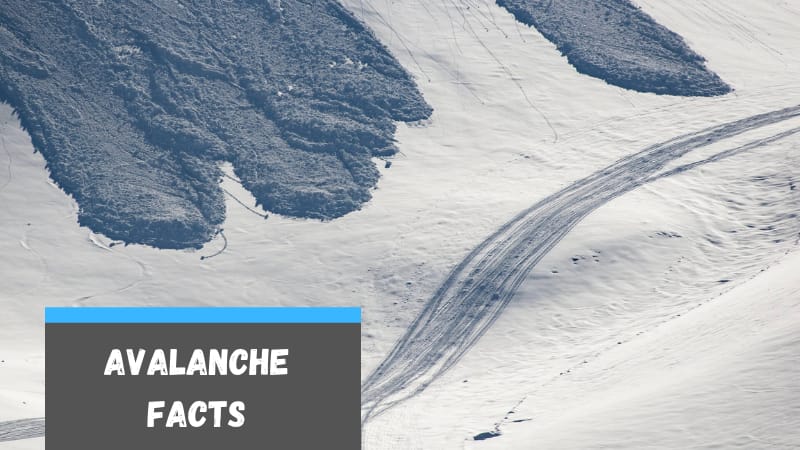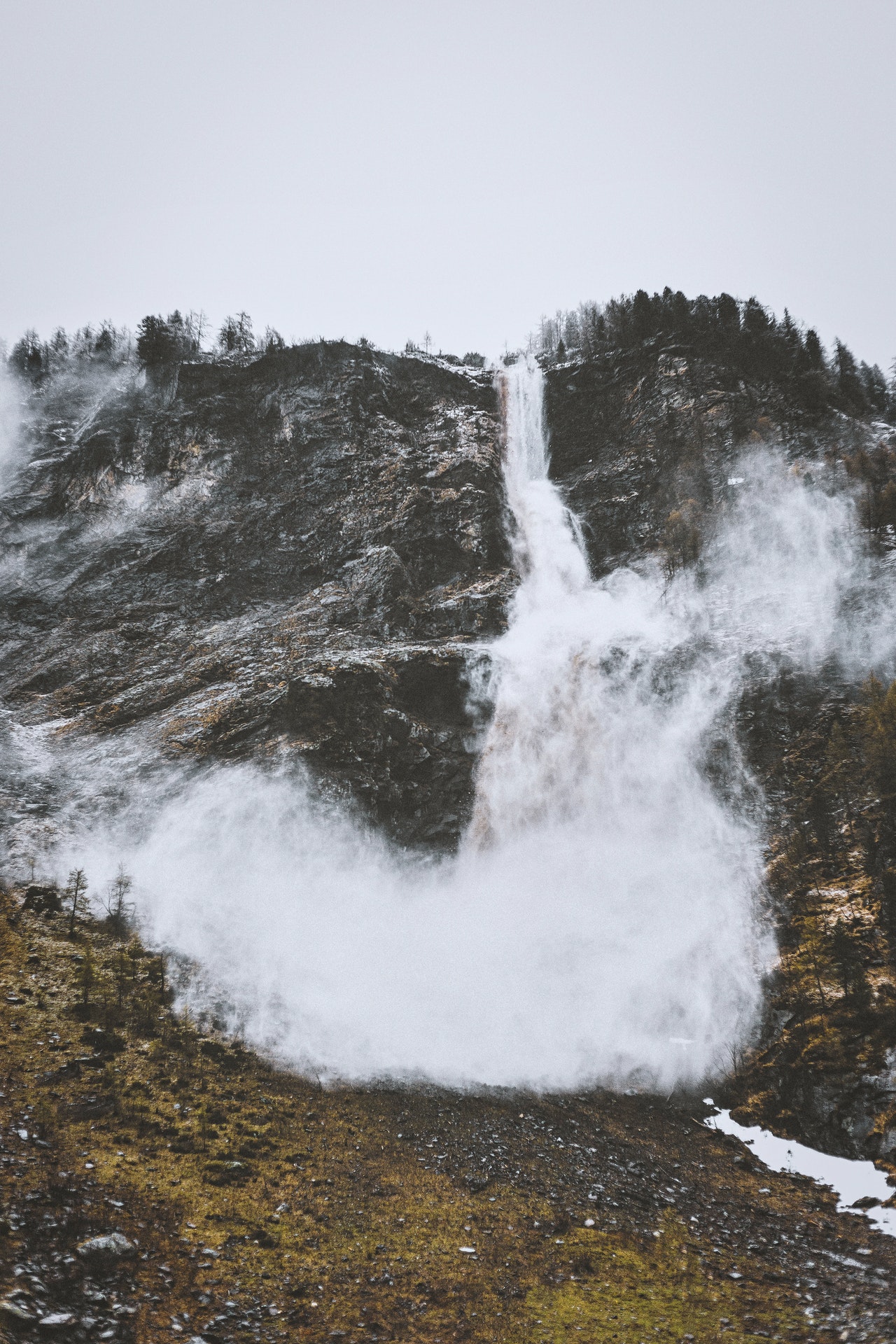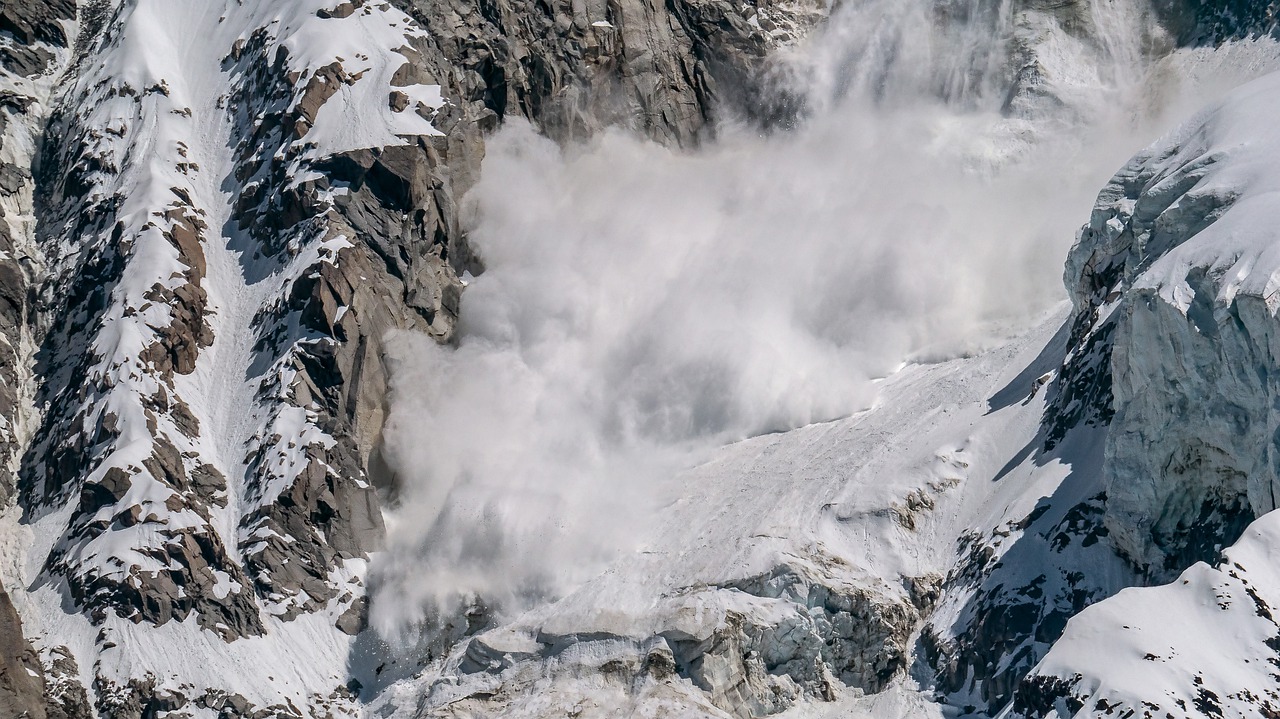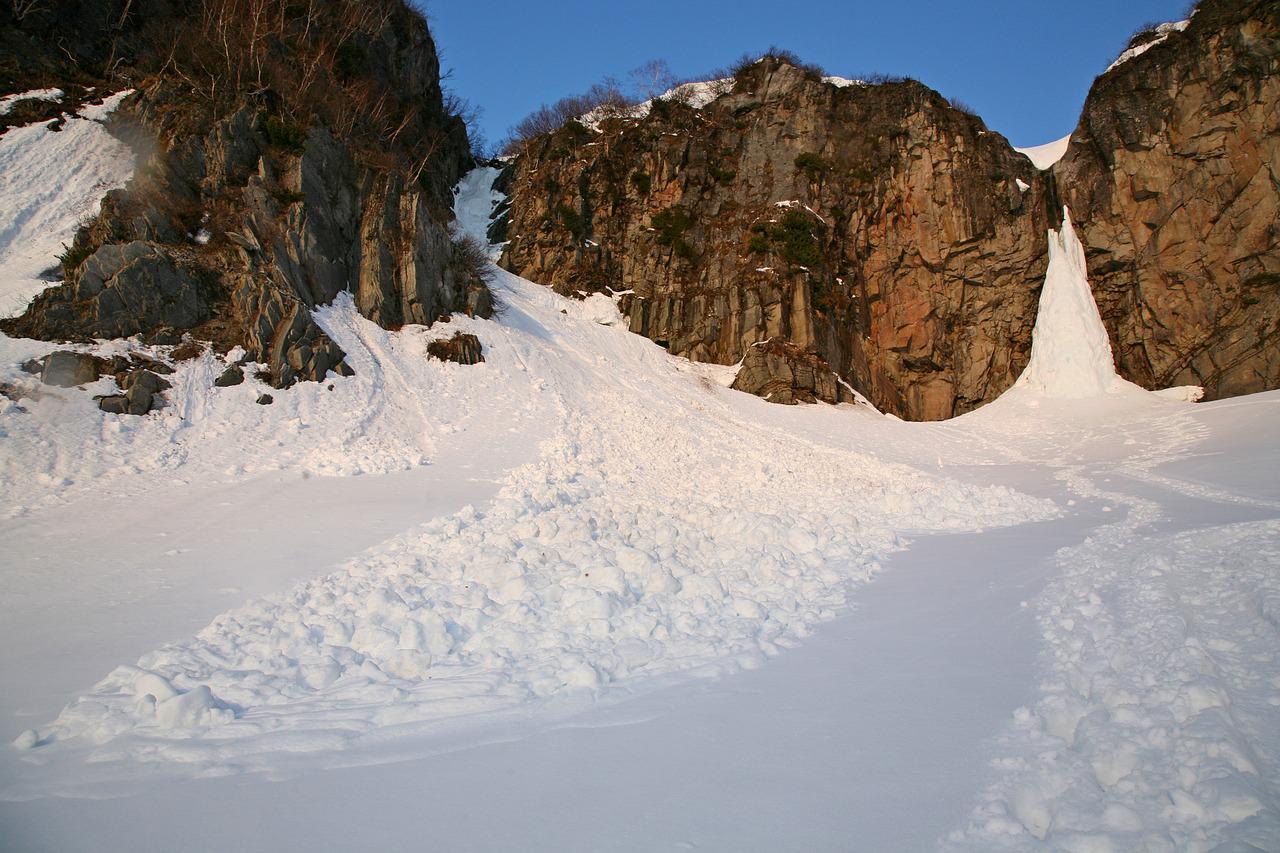
Are you curious about avalanches? We have shared thirty-nine exciting Avalanche facts for kids with you.
An avalanche is a phenomenon when a large amount of snow quickly moves down a slope. It can also be called a flood of snow. An avalanche is quite deadly and destructive because it sweeps away anything that comes in its path. Sometimes, an avalanche can be of large amounts of earth or sliding rocks as well.
Avalanches occur mostly in mountainous terrains. There is more to an avalanche that may interest you. Here are some intriguing avalanche facts for kids.
39. Avalanche Facts for Kids
1. Avalanches mostly occur in terrains without trees or large rocks. These things prevent the snow from slipping or sliding.
2. An avalanche generally occurs due to a weak layer of snow. Melting and refreezing of snow makes it slick and such snow easily slides away, causing an avalanche,
3. An avalanche is caused by heavy snowfall, high temperatures, or strong winds.
4. Even the movement of a skier or snowboarder on weak ice can cause an avalanche.
5. People living in mountainous regions use several tactics to protect themselves from avalanches. They install special fences to keep the snow in place.
6. Sometimes, explosives are used in places where heavy snow has accumulated and an avalanche is likely to occur.
7. Avalanches caused by ‘loose snow’ cause only little destruction or deaths, while ‘slab’ avalanches’ are lethal as they are huge plates of snow sliding as a single unit.
8. Each year, around 150 people lose their lives worldwide because of avalanches.
9. In 90% of the cases, the victim or someone along with the victim causes the snow slide.
10. The human body is three times denser than the debris of an avalanche and hence, sinks quickly. As soon as the slide slows, one should clear the air space to breathe and then punch your hands out of the debris to ask for help.

11. Once the snow slide stops, it settles like concrete.
12. Noise does not trigger avalanches, as usually shown in movies. These are caused by factors like snow cover, steep slope, weak layer, or a trigger.
13. Around 90% of avalanches occur in slopes that are at an angle of 30 to 45 degrees. Slopes that are steeper, continuously slough snow, preventing a deep snowpack from collecting. The snowpack on flatter slopes leads to avalanches.
14. The risk of an avalanche is at the peak 24 hours after a 12-inches snowfall.
15. Avalanches can speed up to 80 mph within 5 seconds.
16. A train wreck in 1910 had caused the deadliest avalanche in America. Around 96 people lost their lives in the incident.
17. The survival rate of a victim rescued within 18 minutes is almost 91%. Victims buried for 19 to 35 minutes are at a 66% chance of survival only.
18. After an hour of being buried, only 1 out of 3 victims is found alive in an avalanche. The common reasons for death are wounds, suffocation, and hypothermia.
19. Experts can tell whether the risk of an avalanche is low, high, or medium in a particular area.
20. The basic tips to survive an avalanche is to grab and hug a tree when caught in an avalanche or try to swim through the sliding snow as fast as you can.

21. Most avalanches are small with only a small amount of ice or snow, but in huge mountains like the Alps or the Himalayas, avalanches can be really huge and highly destructive.
22. Small avalanches are called ‘sluffs.’ They happen all the time and are less destructive.
23. Alpine countries such as France, Switzerland, Italy, and Australia experience the most avalanches every year.
24. In America, the states of Utah, Colorado, and Alaska experience the most avalanches.
25. In 1970, an avalanche was triggered by an earthquake, killing around 22,000 people in Peru.
26. Avalanches may start off with very little ice or snow, but they gather mass as they slide further, getting deadlier and heavier as they slide down the slope.
27. An experienced avalanche forecaster can accurately predict an avalanche before it begins. Such an experienced forecaster often works in the field to gather information about snowpacks with remotely accessed weather data tools, details about historical weather, and avalanche databases.
28. Such forecasters are in heavy demand along mountain highways, ski areas, and in areas used for snowmobiling.
29. In some areas where avalanches occur frequently, dams or wedges are built to divert the cascading snow or ice.
30. In 1999 in Montroc, France, an avalanche caused the death of 12 people in their chalets after they were buried in 100,000 tons of snow.

31. In the 1950-51 winter season, around 265 people were killed in avalanches in the Alps of Germany, Italy, Switzerland, France, and Austria. The avalanches were together referred to as the ‘Winter of Terror’.
32. It is believed that around 40,000 to 80,000 soldiers died during World War I because of avalanches at the Austrian-Italian front.
33. Explosives are dropped by hand, a helicopter, or even shot by a gun to the intended targeted area to prevent an avalanche.
34. Avalanches can occur throughout the year but are generally more common in the winter months from December to April in the Northern Hemisphere.
35. A particular Avalanche event in 1916 was termed as ‘White Friday’, after it caused the death of 2000 people.
36. The Lahaul Valley Avalanche in India in 1979, killed around 200 people.
37. The Salang Avalanches in 2010 in Afghanistan were a series of 36 avalanches that killed 172 people.
38. The Mitsumata Village Avalanche in 2018 in Japan killed 155 people.
39. If caught in an avalanche while driving in a car, you must shut all doors and close the windows with seat belts tied. It is easier to find a car in snow than to find a missing person.
Conclusion
An avalanche is a scary natural phenomenon. Although it may look beautiful from afar, there is nothing good about it. It causes widespread destruction and death. The only way to prevent avalanches is to ban deforestation and to grow more trees.
These were some interesting facts about an avalanche for kids. It is better to educate kids about avalanches and teach them basic survival skills.
